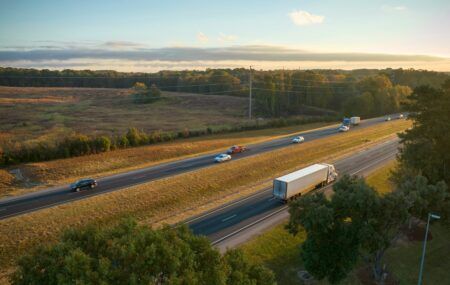The US Department of Transportation (USDOT) has issued its eagerly awaited federal policy for automated vehicles, laying a path for the safe testing and deployment of new automotive technologies that it says have enormous potential for improving safety and mobility for Americans on the road.
The Federal Automated Vehicle Policy sets out a proactive approach to providing safety assurance and facilitating innovation through four key parts:
The Vehicle Performance Guidance for Automated Vehicles sets clear expectations for manufacturers, developers and other organizations, and includes a 15-point ‘Safety Assessment’ for the safe design, development, testing and deployment of automated vehicles
Model State Policy, which presents a clear distinction between federal and state responsibilities for regulation of highly automated vehicles, and suggests recommended policy areas for states to consider, with a goal of generating a consistent national framework for the testing and deployment of highly automated vehicles
NHTSA’s Current Regulatory Tools, which can be used to ensure the safe development of new technologies, such as interpreting current rules to allow for greater flexibility in design, and providing limited exemptions to allow for testing of nontraditional vehicle designs in a more timely fashion
Modern Regulatory Tools, which identify new regulatory tools and statutory authorities that policymakers may consider in the future to aid the safe and efficient deployment of new lifesaving technologies
The primary focus of the policy is on highly automated vehicles, or those in which the vehicle can take full control of the driving task in at least some circumstances. Portions of the policy also apply to lower levels of automation, including some of the driver-assistance systems already being deployed by auto makers. The policy is a product of significant public input and stakeholder discussions, and through a series of next steps and in response to public comments, USDOT intends to update the policy annually.
“Automated vehicles have the potential to save thousands of lives, driving the single biggest leap in road safety that our country has ever taken,” said US Transportation Secretary, Anthony Foxx (below, left). “This policy is an unprecedented step by the federal government to harness the benefits of transformative technology, by providing a framework for how to do it safely. Public input has been essential to getting this right. There has been a strong call from state and local governments, industry, safety experts, mobility advocates and average Americans to establish a clear policy for the deployment of automated vehicles on our roads. There are huge upsides and significant challenges that come with automated vehicle technology, and we will continue the conversation with the public over the coming months and years, as this technology develops. New technologies developed in the 20th century, like seatbelts and airbags, were once controversial, but have now saved hundreds of thousands of American lives. This is the first in a series of proactive approaches, including the release of a rule on vehicle-to-vehicle communications, which will bring lifesaving technologies to the roads safely and quickly, while leaving innovators to dream up new safety solutions.”
The document is intended to create a unified direction for future state legistation. The opening to the section entitled Model State Policy reads: “Vehicles operating on public roads are subject to both Federal and State jurisdiction. This section defines Federal and State regulatory responsibilities and outlines a Model State Policy that if adopted can create a consistent, unified national framework for regulation of motor vehicles with all levels of automated technology, including highly automated vehicles (HAVs). Some States have already begun to pass laws and develop regulations concerning HAVs, and the national discussion to date has benefited from their efforts to begin addressing the complex issues posed. The Model State Policy issued at this point builds on the collective knowledge gathered thus far, and can help to avoid a patchwork of inconsistent laws and regulations among the 50 States and other U.S. jurisdiction, which could delay the widespread deployment of these potentially lifesaving technologies.”
To read the full document click here
Get expert opinion on exactly what this new policy document means for you at the Autonomous Vehicle Safety Regulation World Congress, in Novi, Michigan this October 25-26. Book your delegate pass today! Just click here




